Is learning the guitar just about strumming a few guitar chords or practising guitar notes and scales?? Not at all. The guitar is more than a simple instrument – it carries millennia of history, culture, and innovation. From ancient lute-like classical guitars and early Spanish acoustic guitars to today's powerful electric guitars, each design tells a story of evolution. Features like headstock, fretboard, cutaway, hollow body or solid body electric aren’t just some technical details – they actually represent the innovations over the years that have shaped music across genres and generations.
It's remarkable how this seemingly simple string instrument connects us to thousands of years of musical tradition, don't you think?
Whether you’re playing on string acoustic guitars, experimenting with single coil pickups and guitar effects pedals, or using a Fender limited edition or Gibson model, you’re not just making sounds – you’re part of a global love affair with the electric guitars and acoustic guitars family. Many love playing the guitar because it connects culture, people, and creativity, making it one of the world’s most iconic, attractive and versatile tools of expression.
In this article, you’ll discover the fundamental things every beginner should know about the ultimate guitar – as well as fascinating insights for anyone curious about how it all works.
So whether you play, listen, or are simply curious, get ready to dive in – the world of the guitar has something for everyone.
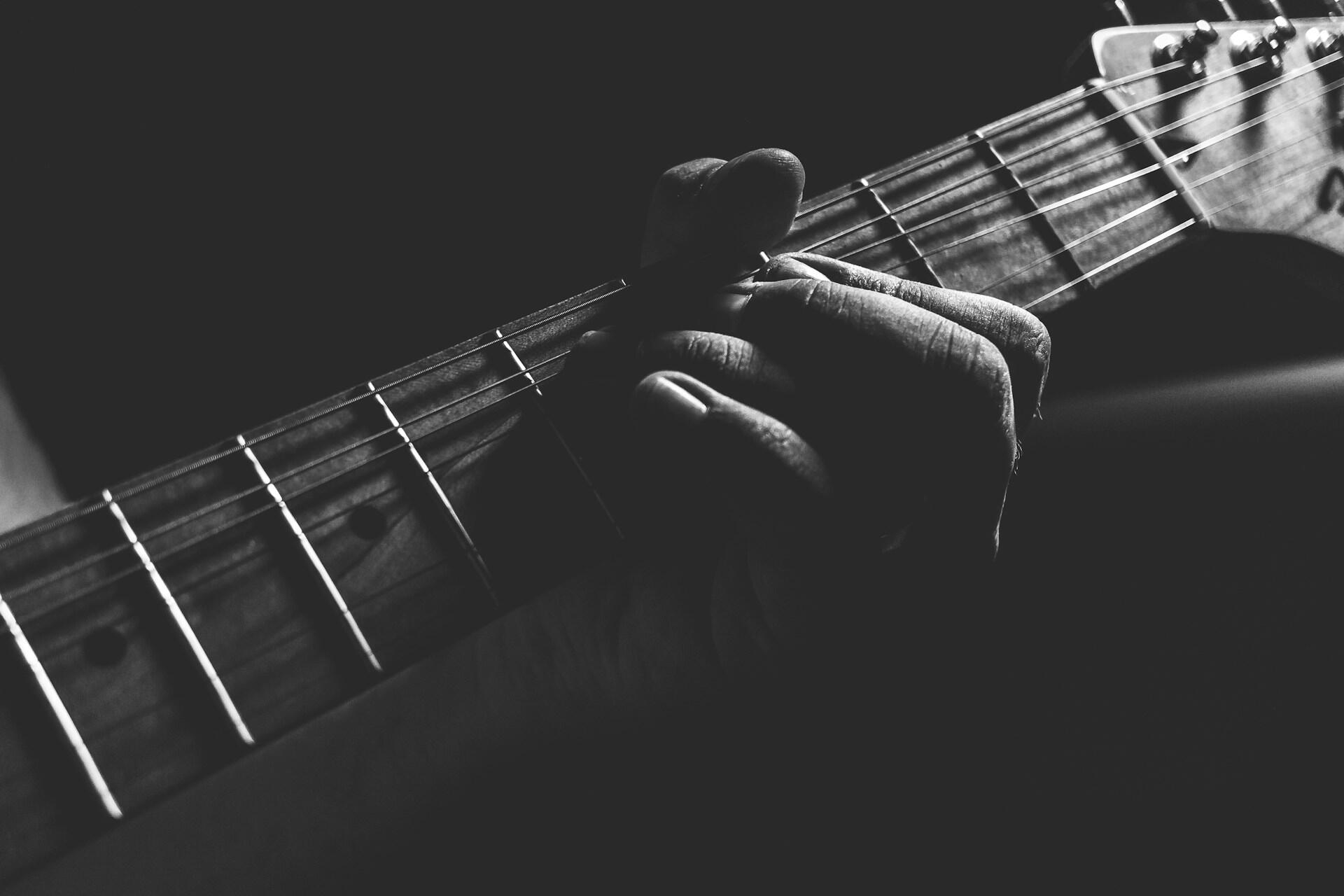

The History of the Guitar: From Ultimate Guitar Origins to Modern Music
According to the History of Simple Things, the guitar has a history that stretches back thousands of years. While its modern form is instantly recognisable today, its origins are deeply rooted in ancient civilisations. You don’t necessarily need to know this in order to learn the instrument, but it’s always good to understand history, as it’s always fun and interesting to learn about the origins.
The origins of the guitar go back over 4,000 years to Mesopotamia and Egypt. Before evolving into what we know today as a guitar, this instrument was known as bowl harps and tanburs in those days. Over time, these designs evolved as they spread across cultures & regions.
In the 8th century, the Moors introduced the oud, a pear-shaped string instrument, to Spain. Later on, the oud became a major influence on early European guitars and played a key role in shaping their development.
By the 15th and 16th centuries, Spain produced a more recognisable version of the modern guitar called the vihuela. This instrument, with six double courses of strings, was similar to the lute, but also had a shape similar to today’s classical guitar. It was primarily used in aristocratic and courtly music. Around the same time, the Baroque guitar gained popularity across Europe. With five courses of gut strings, this instrument was used for both accompaniment and solo performances, leaving a lasting impact on classical music until today.
In the late 18th and 19th centuries, the modern six-string guitar that we have today became popular. Spanish luthiers, particularly Antonio Torres Jurado, a 19th-century guitar maker, also known as the father of the modern classical guitar, played a significant role in this shift. Antonio introduced guitars with larger bodies, fan bracing, and improved resonance, which resulted in the instrument achieving a richer and more powerful sound.
In the United States, guitar makers such as C.F. Martin and Orville Gibson (yes, the person behind the famous brand Gibson) pioneered new designs that led to the birth of the steel-string acoustic guitar for country, folk and blues musicians. Martin introduced the X-bracing system, which made steel strings possible. It gave the instrument a brighter, clearer and louder sound with strong projection. Gibson further diversified the guitar’s sound when he introduced archtop designs, such as f-holes, which are similar to those of a violin.
In the 1930s and 1940s, engineers and luthiers developed electromagnetic pickups that converted string vibrations into electrical signals. Among the earliest successes was the Rickenbacker “Frying Pan,” but it was the Gibson ES-150, popularised by jazz guitarist Charlie Christian, that truly showcased the potential of the electric guitar.
In the mid-20th century, the guitar transformed with the rise of the electric guitar. Fender introduced the Telecaster in 1950, followed by Gibson’s Les Paul in 1952, and the Stratocaster soon after that. These models defined modern music, shaping the sound of rock, blues, and jazz. By the 1960s and 70s, the guitar became the heart of popular music, from Hendrix’s electric experiments to Dylan’s acoustic storytelling. In the decades that followed, styles ranged from flashy solos by virtuosos (highly skilled, master-level guitar players, like Eddie Van Halen or Steve Vai) to the raw energy of punk and grunge, while acoustic makers like Taylor and Takamine modernised their neck, fretboard, and body designs.
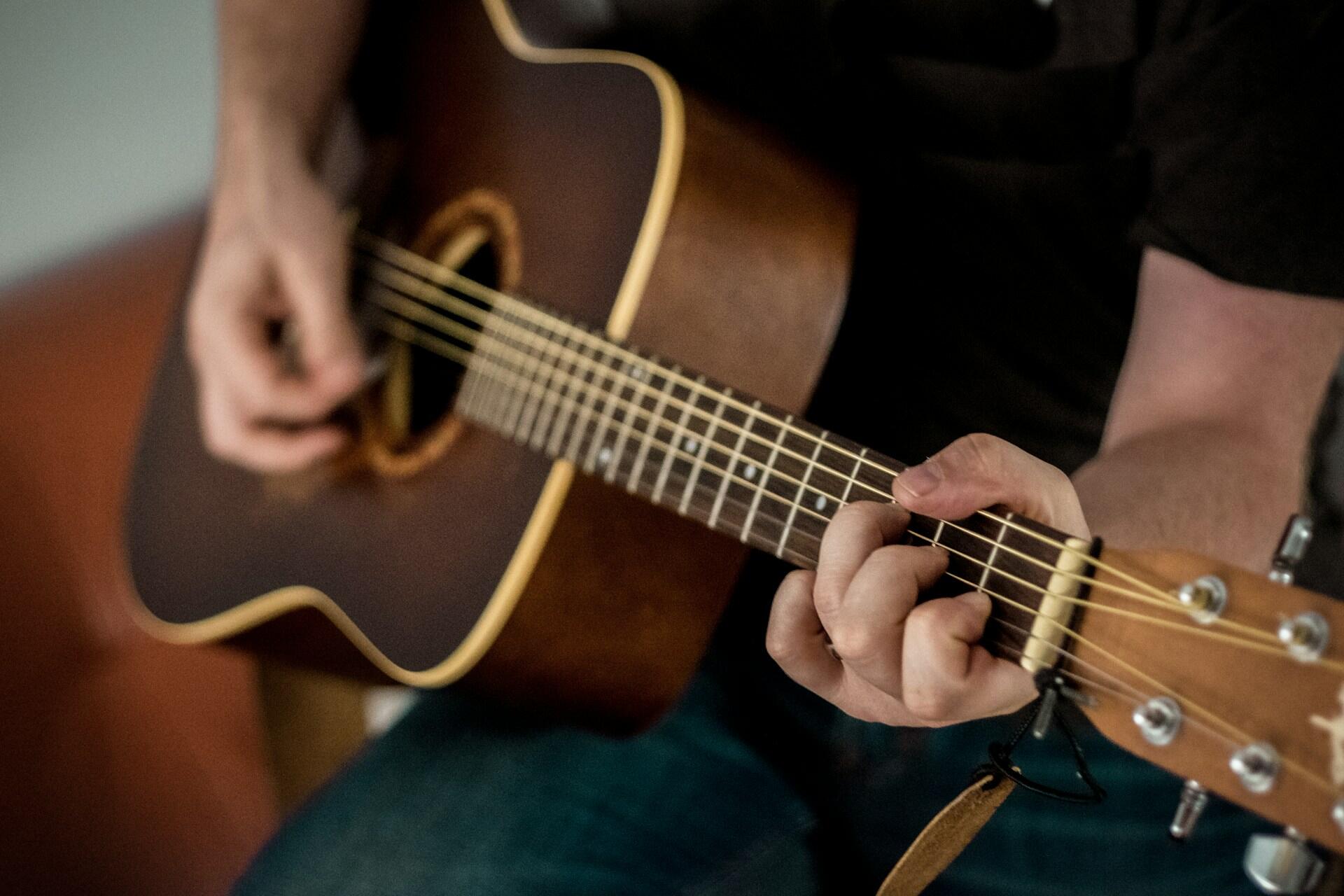
If you find all of this a little mind-boggling, you’re not alone – we felt the same way while putting it together! But don’t worry, take your time to grasp the information, and if you’re interested, there are plenty of videos and articles on the internet to help you out (Including ours).
Today, the guitar is still one of the most popular instruments in the world. Despite the rise of new technologies, the essence of the guitar hasn’t changed. It continues to connect deeply with human emotions through guitar chords, guitar notes, and tools like a guitar tuner.
We know that diving into history can sometimes feel overwhelming, but the goal here is to give you a fundamental understanding of how the instrument loved by many around the world came to be. Of course, the story of the guitar is full of details and interpretations, but what we’ve shared here is based on trustworthy sources to give you a solid overview. Read more about how the guitar evolved over time and the history of the guitar here.
Shall we move on to the next section?
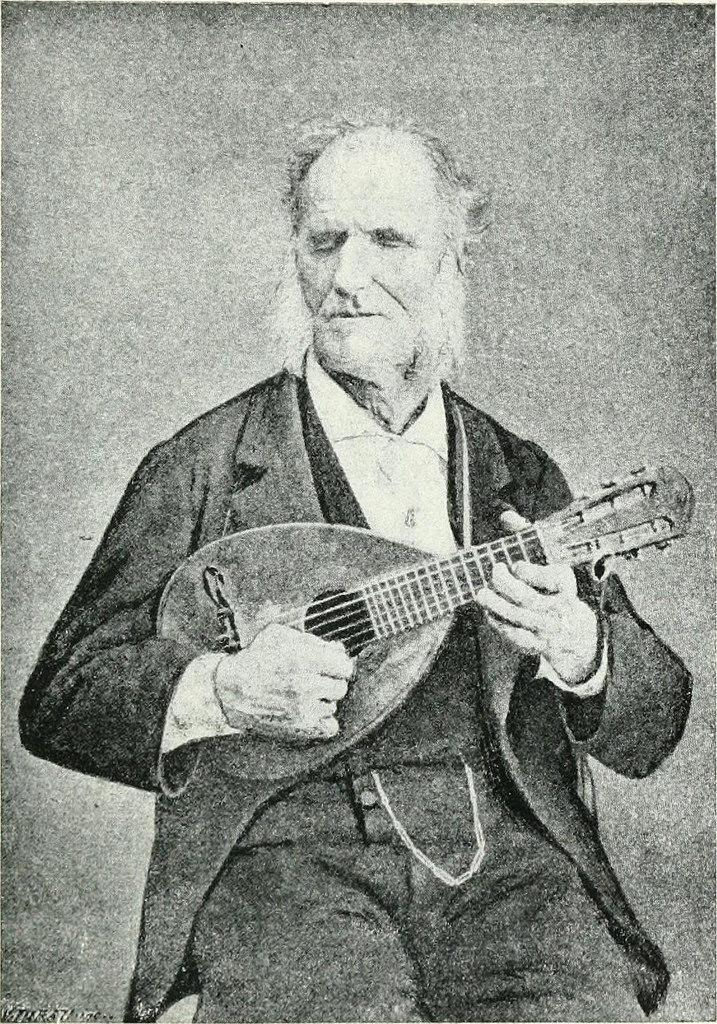
Electric vs. Acoustic Guitar: How to Choose the Right Instrument for Your Music
So, you’re ready to learn to play guitar, but you’re missing something – a guitar! Deciding between an acoustic guitar, an electric guitar, or even a classical guitar can be a daunting task, especially if you’re new. Each type comes with unique tones influenced by the fretboard, the shape of the body, and the type of guitar strings, and we know that it’s not a cheap purchase.
As a beginner who has never played this instrument before, it’s natural for you to think about what’s easier to play on. Well, we wish we could give you an answer right away, but it really comes down to what you really want to get out of it.
Here are a few questions to ask yourself before choosing your guitar:
- What kind of music do you want to play? What’s your personal music style?
- What are your goals with the guitar? Is it a hobby, for writing or for recording?
- How loud can you be? Do you have a studio, a practice room, or need to keep it quiet?
Once you’ve thought about these, picture yourself with the instrument. If you’ve always imagined strumming songs around a campfire or playing folk, country, or classical music, an acoustic guitar with steel strings is a better choice for you. If it was rock, blues, or metal bands that inspired you to learn guitar, then an electric guitar – whether solid body or semi-hollow body – might feel more suitable.
If you want the best of both worlds – something you can play unplugged at home with your friends or on the beach, but also plug into an amplifier for practice sessions or gigs, then go for an electro-acoustic guitar for that versatility.
However, the best part is that, regardless of the purpose, the fundamental techniques and approaches to playing acoustic guitars and electric guitars are the same. What makes it even better is that once you learn scales and chords on one, you can transfer that knowledge to the other. Let’s take a look at the three main categories of guitars in the instrument’s family.
Acoustic Guitars: Classical Nylon Strings vs. Steel String Acoustic Sounds
An acoustic guitar produces a pure and raw sound that's all about the resonance from its hollow body. You don’t need an amplifier or a cable to create the sound. The steel-string guitars deliver bright, loud and crisp tones that work well for genres like pop, folk, and country. Meanwhile, classical guitars use nylon strings that produce a warm, mellow and soft sound, making it perfect for classical pieces or flamenco.
Interestingly, the wood that was used to make the guitar creates a tone that uniquely belongs to only your guitar. It is said that no two acoustic guitars produce the same sound because the wood affects the tone, as each piece of wood is unique. Even two guitars made from the same piece of wood will sound different.
So, it’s your sound, and uniquely yours. Most learners start on steel string acoustic models for projection, while classical guitar strings on nylon instruments yield a softer, more intimate voice.
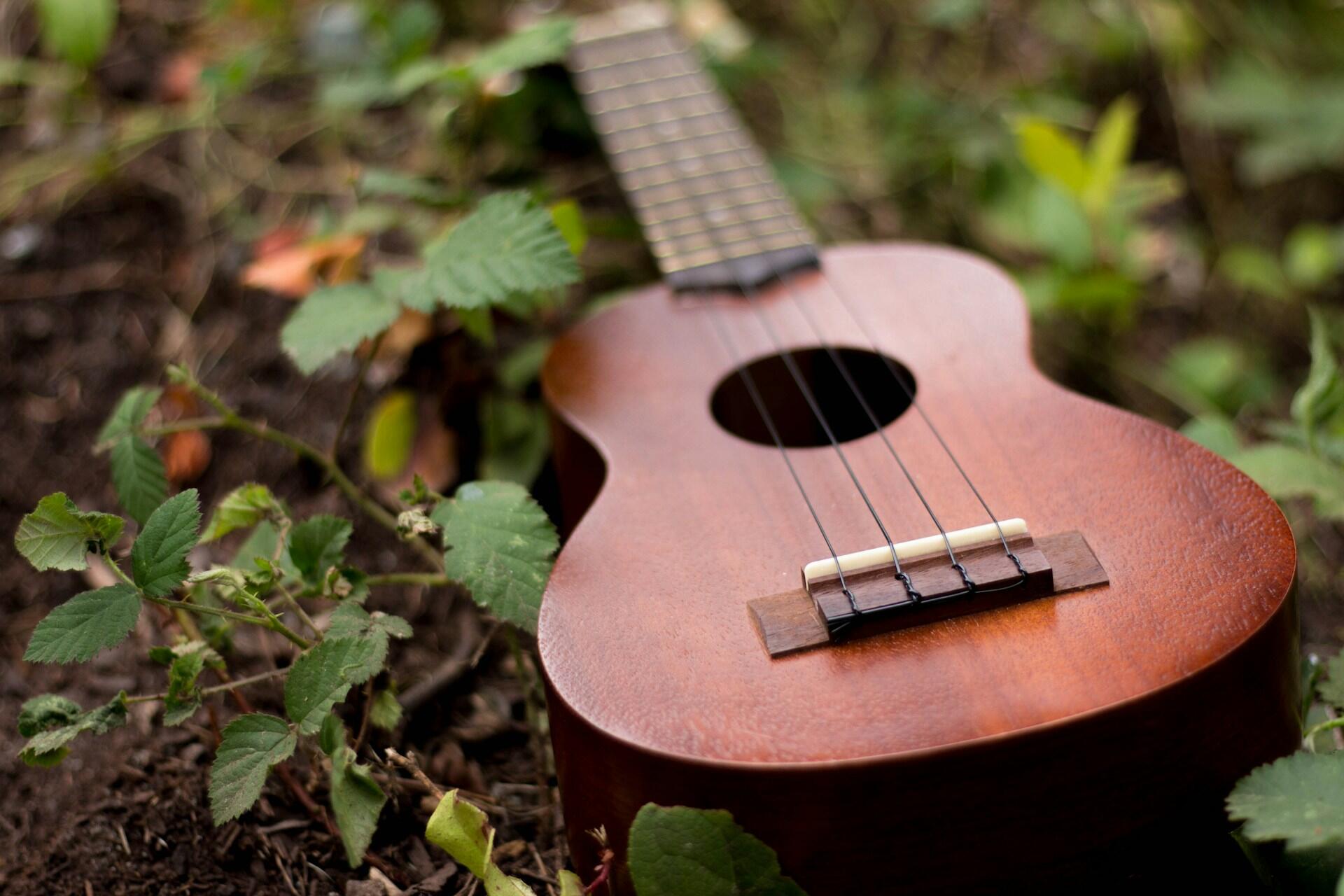
Electric Guitars: Pickups, Solid Body Design, and Modern Music Power
Unlike an acoustic guitar, an electric guitar does not rely on a hollow body to make sound. Instead, it uses pickups – small devices that sense the vibration of the strings and turn them into electrical signals. These signals are then sent to an amplifier (amp), which makes the sound louder. With an amp, you can go from soft and clean to powerful and distorted, giving the electric guitar its signature versatility. Tonal options are also shaped by body type – from solid body models to semi-hollow body designs that add resonance and sustain.
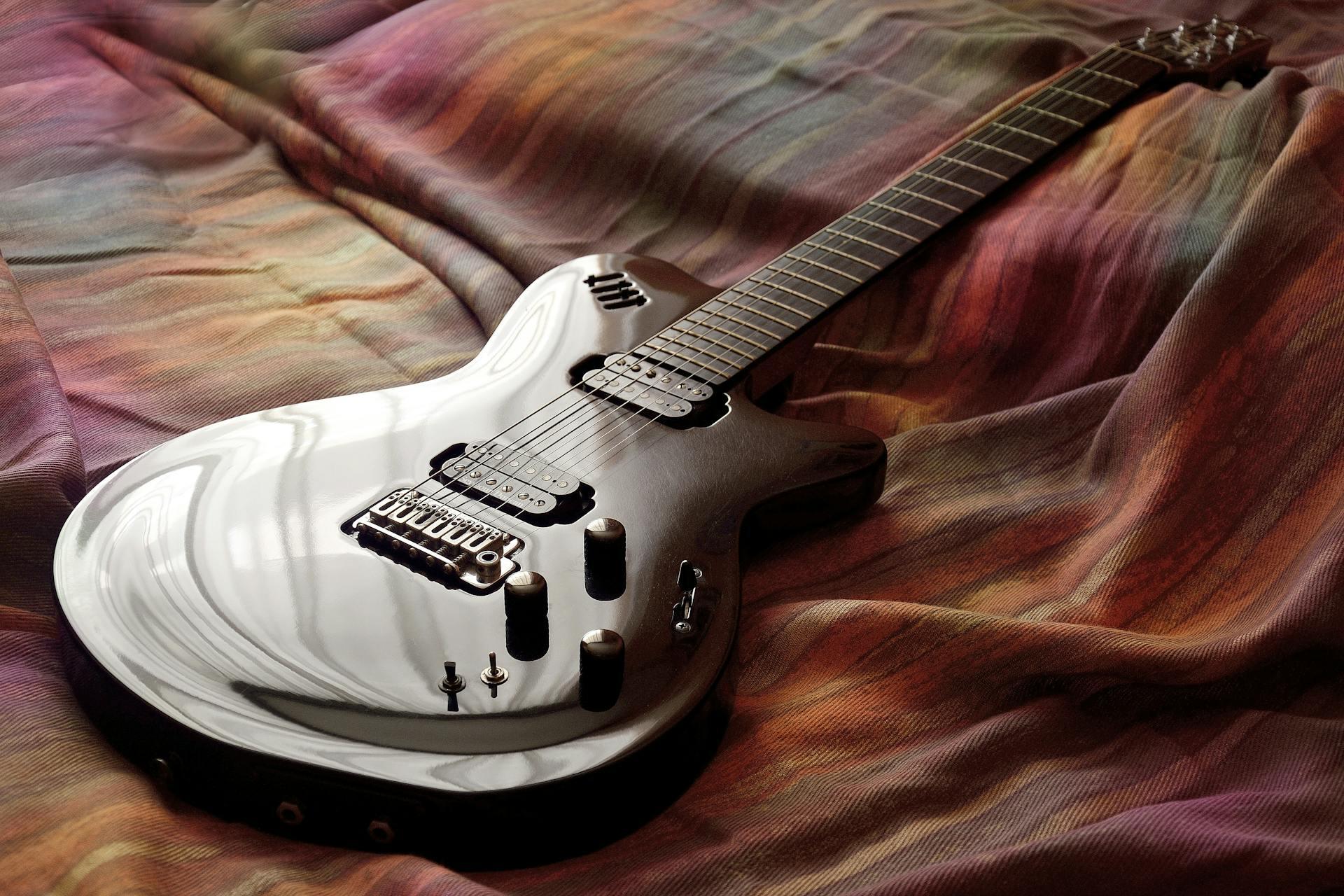
Electro-acoustic Guitars: Combining Natural Sound with Amplified Performance
Need a guitar that can do both? That’s where the acoustic-electric guitar comes in. You can play it unplugged like a normal acoustic, or you can plug it into an amp, PA system, or recording device when you want to be louder, like on stage or recording. It’s the best of both worlds – you get the natural acoustic sound plus the option to boost the volume whenever you need. An electro-acoustic guitar gives you the natural resonance of an acoustic with preamps and outputs for live performance or recording.
Pros and Cons of Acoustic Guitars: Tone, Strings, and Playing Style
Let’s take a look at some of the pros and cons of acoustic guitars, shall we?
| Pros | Cons | ||
|---|---|---|---|
| No extra equipment needed | No need for amplifiers, cables or other accessories. It’s ready to play whenever and anywhere. | Hard strings | Need more power to press down the strings, which can be tougher for beginners. |
| Easier fingerpicking | With wider spaces in between the strings, it’s easier to pluck individual strings cleanly using your fingers. | Limited sound option | The sound is natural and fixed. You can't add effects or other electronic manipulations. |
| Focus on basics | Without electronics, you can concentrate on strumming and finger placement. | Bulky body | The bigger body and neck may feel uncomfortable, especially for people with smaller hands. |
| Builds strength | Thicker and wider strings help strengthen your fingers and develop calluses faster. | Sensitive to humidity | Acoustic guitars can swell, crack, or lose tone if exposed to very dry or damp conditions. Proper care is needed. |
| Budget friendly | Usually cheaper than an electronic guitar. | Weaker bass | Not ideal for heavy or bass-driven genres. |
Pros and Cons of Electric Guitars: Pickups, Body Design, and Sound Range
Now that we have seen the pros and cons of an acoustic guitar, let’s take a look at the pros and cons of an electric guitar before you make a conclusion or decision about what you want to buy.
| Pros | Cons | ||
|---|---|---|---|
| Easier to play | Thinner strings and a lower string action (distance from strings to fretboard) require less finger pressure to press them down. | Cost | Expensive to set up due to the accessories, such as an amplifier, effect pedals, and cables. |
| Quiet practice | Can be played with headphones for silent practice. | Less portable | Carrying amps and accessories makes it harder to travel with. |
| Versatile sound | Can create many tones with amps and pedals, from clean to heavy distortion. | Amplifier (amp) required | Without an amp, it produces sounds so quiet that you can only hear the natural plucking of the strings. |
| Great for Many Genres | Works well for rock, blues, jazz, metal, and more. | Steeper learning curve | The wide range of sounds, tone controls, and amp settings can be overwhelming for beginners who are just starting out. |
| Comfortable | Slim neck, lighter strings, and ergonomic design make them comfortable to hold and play. | Maintenance | Electronics like pickups and wiring can get faulty and need repairs. |
Now, we have concluded the pros and cons of the two main types of guitars out there. We hope it helped you to make a decision on the type of guitar you want to get based on your needs. Let us know in the comments which type you are getting!

Guitar Styles Explained: Rock, Blues, Jazz, Funk, Metal, and More
Each musical style possesses its own codes and characteristics, which is why playing rock, blues, or funk is so recognisable, regardless of whether or not one has an ear for music.
The main musical genres for the electric guitar are rock’n’roll, rock, blues, jazz, heavy metal, funk, pop, reggae and country, say, whilst acoustic instruments can play everything from accompanying violins in folk to baroque guitar.
Different genres often demand different setups – funk players may prefer bright strings and clean pickup voicings, while jazz artists often gravitate to hollow body or semi-acoustic guitar tones.

To learn to play all of these styles, you will have to work and develop your fingers and develop your calluses: this is the efficient way to gain speed, flexibility, coordination and strength.
Learn the fundamentals that correspond to each of these musical styles: the main rhythms, how to strum strings with the right hand, different techniques for the left hand, and the common chords. And of course, memorise and master the various parts of the guitar, such as the fretboard and pickups, first! Watching guitar videos will be of huge help.
Beginner guitar players should also pick up a tuner, a capo and a metronome. Now get practising on those basic chords and riffs, and learn a song!
If you’re looking for genre ideas to play on your guitar, explore simple guitar genres and tips to expand your playing.
The 10 Best Guitarists on the Planet: Icons Who Shaped Music History
There are musicians and songwriters who have literally transformed the landscape of guitars and music, and who are icons of specific musical styles.
Listing the famous guitarists on the planet is no easy task, as it varies according to our individual tastes in music and favourite musical genre. Obviously.
Yet, finding and studying some inspirations is a great way to take learning the instrument out of the banality of all this information about different types of guitar cases, tuners, or the pickguard. Amazing guitarists show you the ways to become a wonderful musician, and show you that the instrument is more than just guitar brands and body shapes. Musicians make this stuff come alive.
And whilst the players you like should take precedence, the world of guitarists does agree on a handful of players to cite as global references, both in terms of technical skills and melodic talents.
The biggest guitarists on the planet are:
- Jimi Hendrix: The guitar genius who revolutionised the practice of this instrument with his extraordinary touch and technical innovations.
- Eric Clapton: This excellent melodist and songwriter quite simply seems to be able to play everything, although his style stems from blues and rock.
- Jimmy Page: This iconic member of Led Zeppelin has made significant contributions to guitar practice, like using the bow of a violin.
- Robert Johnson: According to legend, this genius guitarist would have sold his soul to the devil to acquire his singular talents.
- Chuck Berry: This pioneer of rock’n’roll championed the merger of blues and country music.
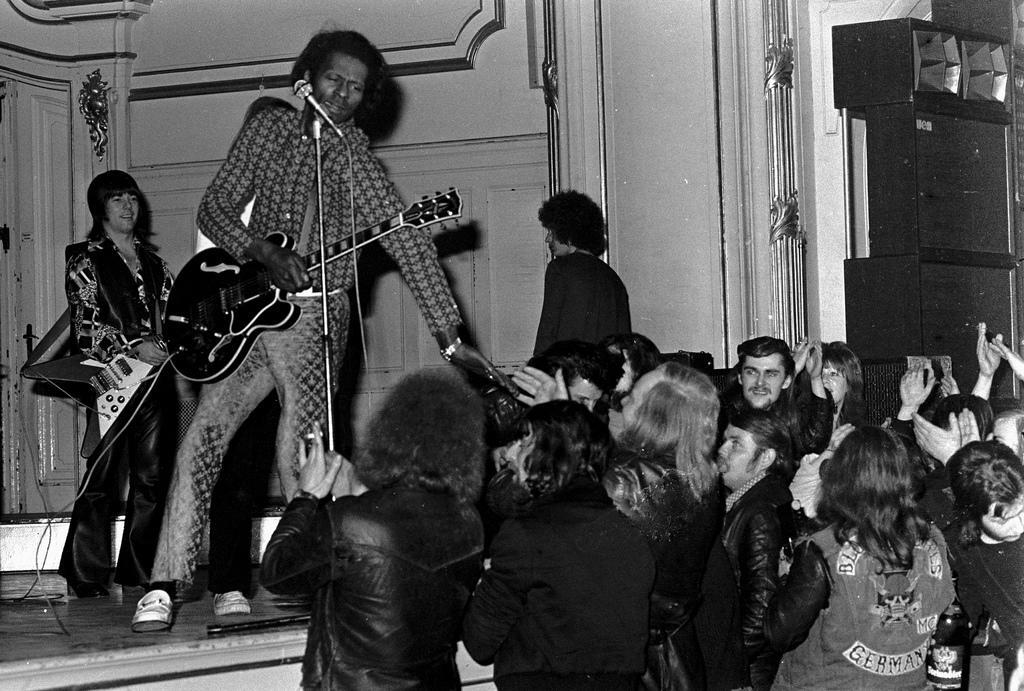
- Carlos Santana: This World Music guitarist has a playing style and sound that is both lyrical and soft.
- Muddy Waters: Thanks to techniques like the bottleneck, this guitarist is unparalleled in his mastery of the blues.
- BB King: This master of the blues probes the human soul with his awe-inspiring music.
- Keith Richards: As lead guitarist of The Rolling Stones, he expertly reduces his music pieces to their quintessential sounds.
- Eddie Van Halen: How does it seem like there are two or three other guitarists on stage when it's just this one musician playing?
To be honest with you, this article or a full article won’t be enough to talk about these guitar legends. However, we tried our best to put some of the iconic guitarists who changed music forever. Discover our article on the most famous guitarists of all time — legendary players who changed music and the way we see the guitar forever.
5 Common Guitar Myths That Beginners Should Stop Believing
Hasty criticisms and abrupt judgments give learning to play guitar an even more difficult reputation. We're sure you've often read and heard about these completely harebrained ideas.
Here are five of the most commonly false ideas people have about the guitar:
- I don’t have an ear for music: Just like for your hands, a musical ear is a learned skill.
- I have no rhythm: With technique, an understanding of music, confident handling of the instrument and regular practice, you will acquire notions of rhythm.
- My fingers aren’t made for guitar playing: Whatever the size of your fingers, nothing should stop you from playing the guitar.
- I’m left-handed: Contrary to popular belief, playing the guitar as a leftie is not a flaw. Just listen to musicians like Kurt Cobain, Gary Moore, or Jimi Hendrix!
- “I’m too old for this sh**”: There is no ideal age for learning to play guitar, as long as you are motivated.
Check out our article that debunks the biggest guitar myths and shows why anyone can learn this amazing instrument.
Career Opportunities for Guitarists: From Teaching to Performing
When you know how to play guitar, several career options are available to you.
- Play in your own music group, perform at concerts, and even make your first album full of your own electric guitar or acoustic guitar pieces. Whether you prefer riffs on a solid body electric or melodies on a steel string acoustic, there’s always an audience.
- Become a guitar teacher: within a music school, in an association, via tutorials and Internet videos or in a blog, or even by giving private lessons. Teaching beginners how to hold the guitar neck correctly or introducing them to the fretboard can be just as rewarding as performing.
- Join a group to perform at diverse events such as weddings, dances, and other parties. Everyone loves guitar solos! You might even explore styles on a semi-hollow body or experiment with bass strings to add depth to your performances.
- Accompany famous musicians on stage, using a string electric guitar for powerful solos or an electro-acoustic guitar for more versatile sets.
As you will find, careers for guitarists are numerous and varied.
From studio sessions to teaching, discover how mastering frets, neck radius, single coil pickups, and body electric guitar designs can turn passion into a career.
If you are still not convinced to buy a guitar, let us share the scientific benefits of playing a guitar.
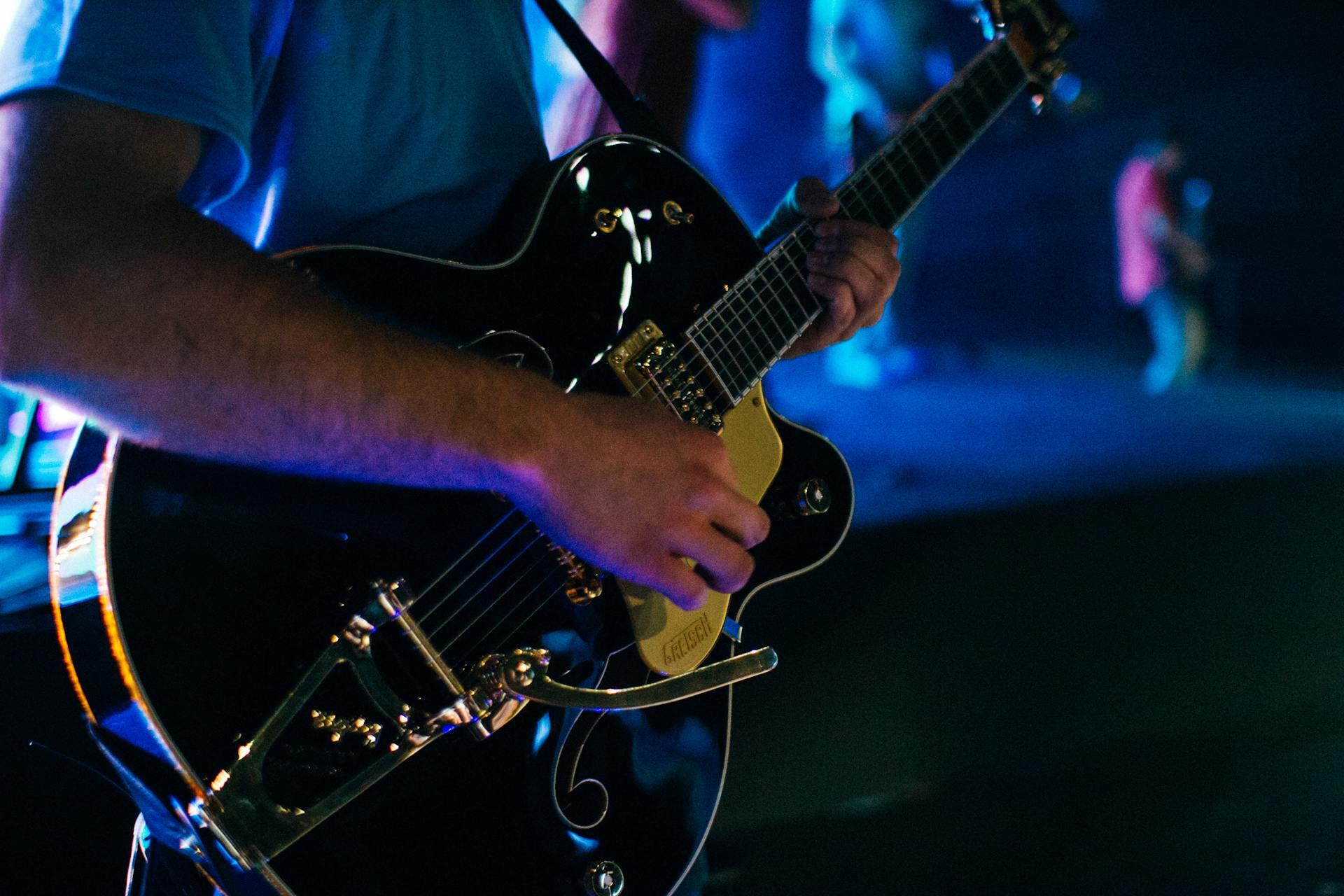
8 Science-Backed Benefits of Playing Guitar for Your Mind and Body
Playing the guitar also has a number of often-overlooked benefits.
Discover without delay the scientific reasons for playing the guitar!
For example:
- It will make you happier.
- Strumming a steel-string acoustic or picking out melodies on a bass guitar helps release stress.
- Regular practice may reduce certain persistent pains.
- Working through scales, exploring the fretboard, and using different frets improve intellectual performance.
- Playing boosts blood circulation.
- Helps beginners boost their self-confidence.
- Creativity flourishes whether you compose on a classical guitar with nylon strings or experiment with a semi-hollow body electric.
- And yes – your guitar playing skills will captivate others, too.
Guitar playing is an excellent medicine against depression. It brings numerous physical and mental benefits, whether you’re holding a solid body model or a hollow body electric guitar.
So make your neurons happy by tuning your Fender limited edition or strumming the string acoustic guitar of your choice.
Quick! Take your dose of serotonin, endorphin or oxytocin by playing a chord progression.
If you’re not sold yet, we’ve written an article that dives into the science-backed benefits of playing guitar.

Additional Benefits of Learning Guitar Beyond the Science
Whilst the science is quite incredible - and surprising - there are one hundred and one different benefits to playing the guitar. Many of them are true when playing any musical instrument, yet others are felt more by the guitar player, of the classical guitar, acoustic guitars or electric guitars. Adding variety through the fretboard, experimenting with a semi-hollow body, or even a steel-string acoustic can shape the experience in unique ways
For example, whilst many musical instruments are played solo or in the context of a huge orchestra, the guitar is fundamentally an instrument for a small group. Guitar music is usually played in a band, and, as such, the social element of the instrument is hugely important. That's true of jazz guitar, rock guitar, and any other style of guitar you can think of – from string acoustic guitar arrangements to riffs on a solid body electric. That's because, historically speaking, it's an accompaniment - either to your voice, someone else's, or to another instrument.
The level of musicianship that this demands is also much higher than for most instruments. You need to be sensitive to the other musicians in your band - players of stringed instruments or something else - and be able to play in a way that works well with the rest of the group.
Other benefits relate to your knowledge of the history of music, as in, by learning an instrument, you are exposing yourself to a whole range of different musical styles, personas, and ideas.
We’ve highlighted the benefits of playing guitar and why it’s a decision you’ll never regret. You’ll also find tips on where to buy your first guitar and how to make an informed choice before starting. Check it out here!

Best Guitar Songs to Impress Others
Ah, yes… the electric guitar or a smooth acoustic guitar can be an amazing tool to impress your friends and family.
To help you, we're revealing 20 songs that every guitarist must play – whether you’re strumming on a steel-string acoustic, showing off smooth bends on a solid-body electric, or adding depth with bass strings.
| Song | Artist | What It’s About | Decade |
|---|---|---|---|
| I’m Yours | Jason Mraz | An Australian hippy love song. | 2000s |
| You’re Beautiful | James Blunt | A song about unrequited love. | 2000s |
| Wild World | Cat Stevens | A poetic declaration of love. | 1970s |
| Wonderful Tonight | Eric Clapton | The serenade of the ultimate guitarist. | 1970s |
| Angie | The Rolling Stones | A love song by the all-time greats. | 1970s |
| Wherever You Will Go | The Calling | A melody for the grunge crooner. | 2000s |
| Wonderwall | Oasis | The iconic song for learning the guitar. | 1990s |
| Shape of My Heart | Sting | Beautiful, melodic, and moving. | 1990s |
| Hallelujah | Leonard Cohen / Jeff Buckley | Great lyrics, great performance, whichever you prefer. | 1980s (Cohen) / 1990s (Buckley) |
| The Scientist | Coldplay | British flirting! | 2000s |
| Tears in Heaven | Eric Clapton | A moving ballad of loss and love. | 1990s |
| Layla (Unplugged) | Eric Clapton | A raw, acoustic version of timeless passion. | 1990s |
| More Than Words | Extreme | A romantic plea beyond simple expressions. | 1990s |
| Always With Me, Always With You | Joe Satriani | An instrumental love song that speaks without words. | 1980s |
| Iris | Goo Goo Dolls | A soaring '90s ballad of vulnerability and love. | 1990s |
| Something | The Beatles | George Harrison’s timeless ode to devotion. | 1960s |
| Wonderful World | Sam Cooke | A sweet, charming declaration of love. | 1960s |
| Yesterday | The Beatles | A melancholic yet beautiful reflection on love lost. | 1960s |
| Let’s Get It On | Marvin Gaye | A sensual anthem of passion and desire. | 1970s |
| Thinking Out Loud | Ed Sheeran | A modern ballad about everlasting love. | 2010s |
Looking for more beginner-friendly songs to impress your crush or wow a crowd? Our article covers everything from timeless romantic classics to modern pop hits that will make you shine. Check it out!
Here’s a playlist with some of the songs from the list. While you may not find all of them here, the rest are available on platforms like YouTube, Spotify, or Apple Music – whichever you prefer. Pair them with the right fretboard practice and maybe even experiment with a semi-hollow body or string acoustic guitar for different tones.

Find a Guitar Teacher Online with Superprof and Start Learning Today
We have come to the end of our article, and we really hope it provided you with all the details needed to embark on this journey with your guitar.
With all this information, it can feel overwhelming to start your journey in the music world with an instrument that has been around for millennia. That’s where we come in!!
Superprof is a one-stop platform that will help you find a guitar tutor from our pool of 22,842 tutors, all without stepping out of your house. YES, you heard that right! Go to our website and register for an account before you follow these simple steps to find your ideal tutor:
1. Head over to our website. Register an account if you haven’t already.
2. Hover your mouse over the address/postcode section
3. Enter your address/postcode and click search
4. You will be presented with a search result comprising all the verified tutors near your
5. Browse through each one of the tutors’ profiles to learn about their experiences, classes, teaching styles, and teaching modes based on your needs and goals. Whether you’re learning guitar chords, reading guitar notes, practising on a classical guitar, or exploring an electric guitar, you’ll find someone who fits your journey.
6. You can choose online or face-to-face classes. With online classes, you can learn literally from any tutor around the world.
7. When you’ve found a matching tutor, send a message to ask any questions you may have. Our tutors usually reply within a few hours – check out our average reply time.
That’s it! You can find a tutor and book a class with these easy steps. Many of our tutors provide your first class FREE, so don’t feel pressured to book a class right away after speaking to your tutor. Join the FREE class to see if they're the right fit for you! Our classes start from only S$35.
What are you waiting for? Head over to our website and start your musical journey with us, Superprof! Whether you’re strumming on acoustic guitars, shredding on electric guitars, or even picking up the bass guitar, we are super elated to welcome you into a community of learners and tutors who are here to grow their skills together. It’s your chance to step into the ultimate guitar learning experience!
It's a magical thing, the guitar. It allows you to be the whole band in one, to play rhythm and melody, sing over the top. And as an instrument for solos, you can bend notes, draw emotional content out of tiny movements, vibratos and tonal things which even a piano can't do. ― David Gilmour














